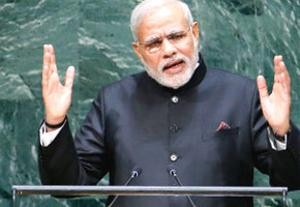A Tribute to the Gem of India – Sir M. Visvesvaraya
 I think the present generation of children in India should know who Sir M. Visvesvaraya was. This great, illustrious man was of different league altogether. Honest to the core, astute in his mental makeup and judicious in his tasks. He had an extra ordinary intelligence, was very generous and had a vision. Sir Mokshagundam Visvesvaraya popularly known as Sir M.V was born in Muddenahalli village in the Kolar District (Karnataka), on the 15 September 1861.
I think the present generation of children in India should know who Sir M. Visvesvaraya was. This great, illustrious man was of different league altogether. Honest to the core, astute in his mental makeup and judicious in his tasks. He had an extra ordinary intelligence, was very generous and had a vision. Sir Mokshagundam Visvesvaraya popularly known as Sir M.V was born in Muddenahalli village in the Kolar District (Karnataka), on the 15 September 1861.
He was an exceptional engineer and a visionary who shaped many institutions in Karnataka like the Bhadravati Steel Factory, Mysore University, Krishnarajasagara dam, Bank of Mysore, the railway system of Mysore, and the hydroelectric projects at Shivanasamudram. Each creation of his was judiciously thought and so well crafted that each of these creations are prodigious and magnificent, standing tall even today.
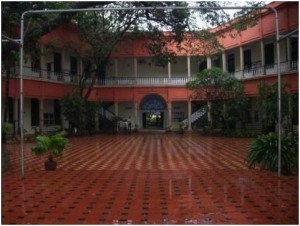 He was instrumental in beginning the “Government Engineering College” at Bangalore, which was one of the first engineering institutes in India. This institution was later renamed as the “University Visvesvaraya College of Engineering” (UVCE) after its founder. It remains as one of the most reputed institutes of engineering in India till this date. After taking voluntary retirement in 1908, Sir M.V was appointed as Dewan, (Minister) of the Kingdom of Mysore. With the support of Krishnaraja Wadiyar IV, Maharaja of Mysore, he made an exceptional contribution, as Dewan, to the all-round development of the Karnataka State. He literally nurtured this state.
He was instrumental in beginning the “Government Engineering College” at Bangalore, which was one of the first engineering institutes in India. This institution was later renamed as the “University Visvesvaraya College of Engineering” (UVCE) after its founder. It remains as one of the most reputed institutes of engineering in India till this date. After taking voluntary retirement in 1908, Sir M.V was appointed as Dewan, (Minister) of the Kingdom of Mysore. With the support of Krishnaraja Wadiyar IV, Maharaja of Mysore, he made an exceptional contribution, as Dewan, to the all-round development of the Karnataka State. He literally nurtured this state.
Sir M.V’s father was Srinivasa Sastry and his mother Venkachamma. Srinivas Sastry was a scholar in Sanskrit. Visvesvaraya inherited great respect for the culture and the traditions of the land from his parents. He completed his early education in Chikkaballapur; and then came to Bangalore for higher education. He joined the Central College. As soon as the results were out, the Government of Bombay offered him a post of Assistant Engineer at Nasik.
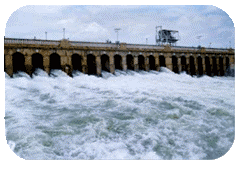 From Bombay, Sri M.V. went to Hyderabad as Chief Engineer. His great achievement in Hyderabad was the taming of the river Moosa. This river divides the city into two parts. In 1908, the river was dreadfully flooded, as never before. The waters of the river drowned many houses, men, women, children and cattle. They were carried away by the floods. Visvesvaraya planned dams to tame both the Moosa and another river Isa. He also suggested that lovely parks should be laid out on the banks of the rivers. The sites of the dams and the adjoining parks are worth a visit even today.
From Bombay, Sri M.V. went to Hyderabad as Chief Engineer. His great achievement in Hyderabad was the taming of the river Moosa. This river divides the city into two parts. In 1908, the river was dreadfully flooded, as never before. The waters of the river drowned many houses, men, women, children and cattle. They were carried away by the floods. Visvesvaraya planned dams to tame both the Moosa and another river Isa. He also suggested that lovely parks should be laid out on the banks of the rivers. The sites of the dams and the adjoining parks are worth a visit even today.
He respected water as a resource, and did not like wastage of it. He said water is very precious to the farmer and it has to be put to the best possible use. For this, the Government appointed a Committee; it was to find ways of helping irrigation. Visvesvarayya found a solution. He implemented an extremely intricate system of irrigation (Block System). He devised steel doors; these could stop the wasteful flow of water in dams. The British Government were full of praise for the solution. The Government appreciated Visvesvarayya’s genius and work. He was promoted to higher positions. This meant even more difficult work. But he loved taking on newer challenges.
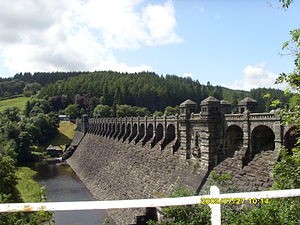 When Sir M.V. was only thirty-two a difficult work was assigned to him. He had to find a way of supplying water from the river Sindhu to a town called Sukkur. He prepared a plan, which was so well received; it added another feather in his cap.
When Sir M.V. was only thirty-two a difficult work was assigned to him. He had to find a way of supplying water from the river Sindhu to a town called Sukkur. He prepared a plan, which was so well received; it added another feather in his cap.
Sir M.V was very particular of what he spoke, in what context and what background – he had to often make speeches. Because of his intelligence, experience and wisdom people thronged to hear him. Visvesvaraya would prepare his speeches thoroughly; he would think about what he was going to say, write them impeccably, get them typed and ponder over every word and revise it. He would revise it four or five times and give it a final shape. Then he would remember important points. Once he visited the Primary School in his native village, Muddenahalli; he gave the teacher ten rupees and asked him to distribute sweets to the children. The teacher said, “Please say a few words to the children, sir,” MV spoke for five minutes and went away. He had spoken without preparation. Some days later he prepared a speech and went to the school again; once again he distributed sweets to the children, and spoke with them importance of developing good habits of learning.
 In 1947 he was the President of the All India Manufacturers’ Association. He had to make a speech at a function. Some of his friends were staying with him. On the day of the function they woke up at half past four in the morning. What they saw astonished them; Sir MV, who was 87 then, was already up and flawlessly dressed; he was walking up and down; he had in his hands a copy of the speech he was to make and was carefully reading and reciting it!
In 1947 he was the President of the All India Manufacturers’ Association. He had to make a speech at a function. Some of his friends were staying with him. On the day of the function they woke up at half past four in the morning. What they saw astonished them; Sir MV, who was 87 then, was already up and flawlessly dressed; he was walking up and down; he had in his hands a copy of the speech he was to make and was carefully reading and reciting it!
He was a well-organized man. We all need to learn some important soft skills from his life. He was always punctual; he was never late by a minute and he never wasted a minute. He honored people who respected time. He said every man should understand his responsibility and do his best. He was honest to the core. There are hundreds of instances to prove this. He dressed impeccably. Until he was restrained to his bed he was very particular about his sense of dressing up. Even when he was 95 people who went to see him were surprised; he was so carefully and neatly dressed. Till the age of 95, Sir M.V would get up to meet people who visited him, and see them off till the door.
In 1952 he went to Patna to study feasibility of a bridge across the Ganga. It was scorching hot. MV was 92. There were some stretches of the site which he could not travel by car. The Government had organized assistants to carry him in chair in those difficult stretches. MV did not use the service; instead, he got off the car and walked briskly. The Government had also arranged for his stay in the Government Guest House. They wanted him to be comfortable. But he stayed in the railway coach and went on with the work. Where are you going to find such people today?
He once said, “The curse of our country is laziness. At first sight everyone seems to be working. But in fact, one man works and the others watch him. As someone said with contempt, ‘it looks as if five men are working. But really only one man works. One man will be doing nothing. One man will be resting. Another man will be watching them. Yet another man will be helping these three.”
Visvesvaraya was a man of spotless honesty. When he was the Dewan, one of his friends wrote to him asking for a house for some days. He thought the Dewan would give him a Government Guest House, free of rent. The Dewan did so. The friend enjoyed his stay in a Government Guest House; but as long as the friend stayed there, the Dewan himself paid a rent of Rs. 250 a month. In 1918 he decided to give up the Dewanship. He had to give the Maharaja his letter of resignation. He went to the palace in the Government car and he returned home in his own car. Those were days when people had to work by candlelight. MV used, for official work, the stationery and the candles supplied by the Government; for his private work he used stationery and candles which he had bought.
Sir MV was a fearless patriot. Those were days when the Englishmen behaved like lord and wanted to be treated like a gods. The Maharaja of Mysore used to hold a Durbar during the Dasara. On the day of the European Durbar, the Europeans were given comfortable chairs but Indians were required to sit on the floor. MV went to the Durbar for the first time in 1910. The arrangements pained him. The next year he did not attend the Durbar. When the officers of the palace made enquiries he frankly gave the reason.
This great legendry man used to support thousands of families with food; he educated thousands of economically weak students. Due to his efforts of electrification thousands of houses were bright with electricity. This truly patriotic man led the country on the path of progress.
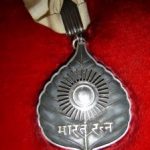 The independent India honored great servants of the country every year by awarding titles. The highest of this award is ‘Bharata Ratna’. In 1955 Visvesvaraya was honored with a ‘Bharata Ratna’, which means the Gem of India which he so accurately deserved. He was a gem of mankind. I salute this legendry man wholeheartedly!!!
The independent India honored great servants of the country every year by awarding titles. The highest of this award is ‘Bharata Ratna’. In 1955 Visvesvaraya was honored with a ‘Bharata Ratna’, which means the Gem of India which he so accurately deserved. He was a gem of mankind. I salute this legendry man wholeheartedly!!!













































